101 BASIC Computer Games: The Book That Built a Trend
Blasting into the past with computer games that marked the beginning of the indie video game scene
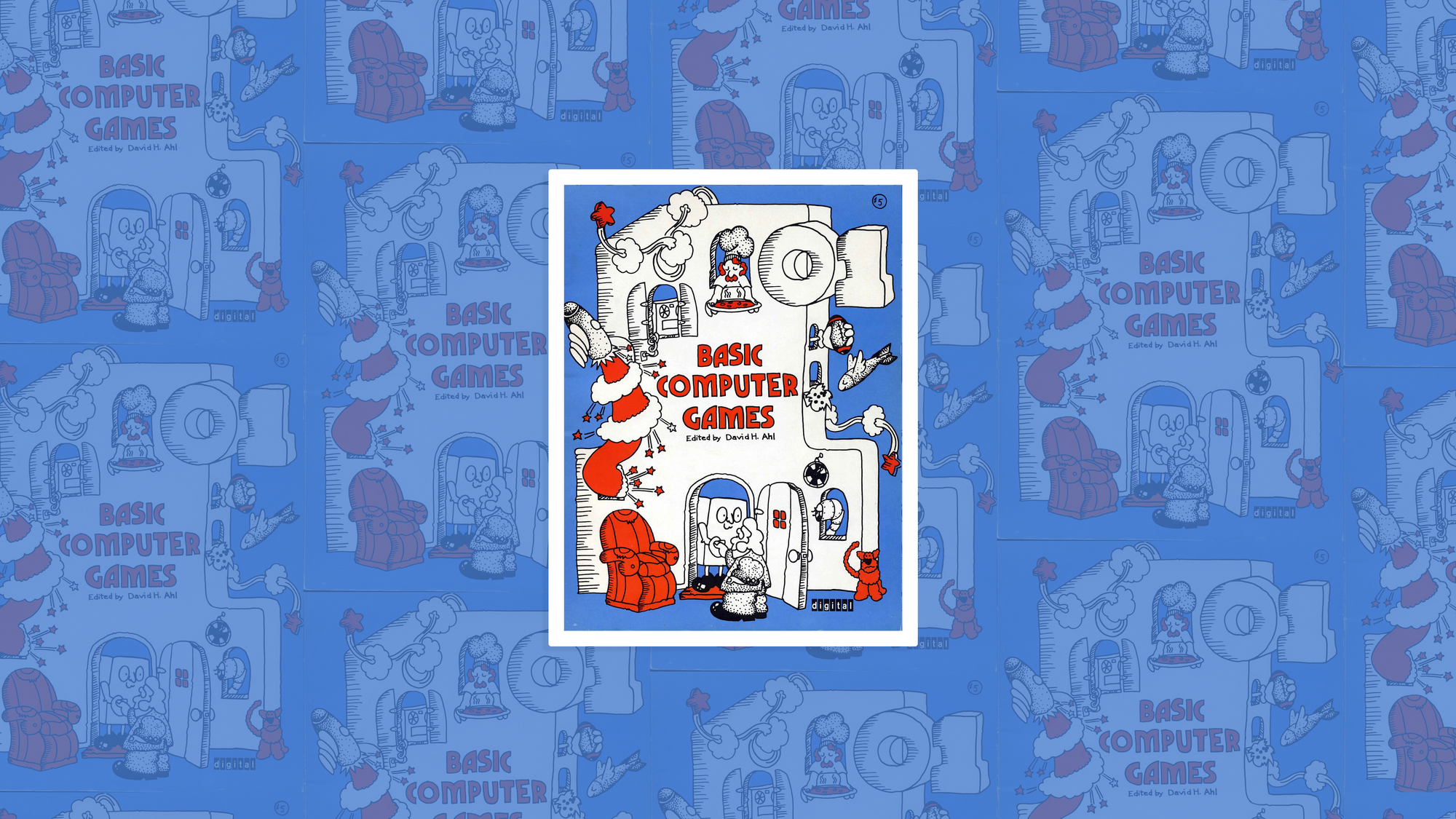
From the perspective of anyone born after about 1975, the type-in program is a preposterously primitive thing. A type-in is a complete computer program printed out on paper which the end user must then manually enter. This is an incredibly tedious process. Even a relatively simple type-in can take hours to enter, and a single mistake can spoil the whole thing.
The type-in was a necessary evil in an era when detachable storage media had yet become universal. Still, type-ins survived the adoption of the floppy disc, appearing in computer magazines well into the 1980s. For hobbyists and upstart programmers, it was one of the few cost-effective ways to get their work out.
Programmers disseminated a lot of early computer games in this way. In an age before there was a video game industry, when computer games were the domain of bored office workers and college students, type-in games were more popular than one might think. Nothing speaks to this more than the success of the 1973 type-in collection 101 BASIC Computer Games, now enjoying its 50th anniversary.
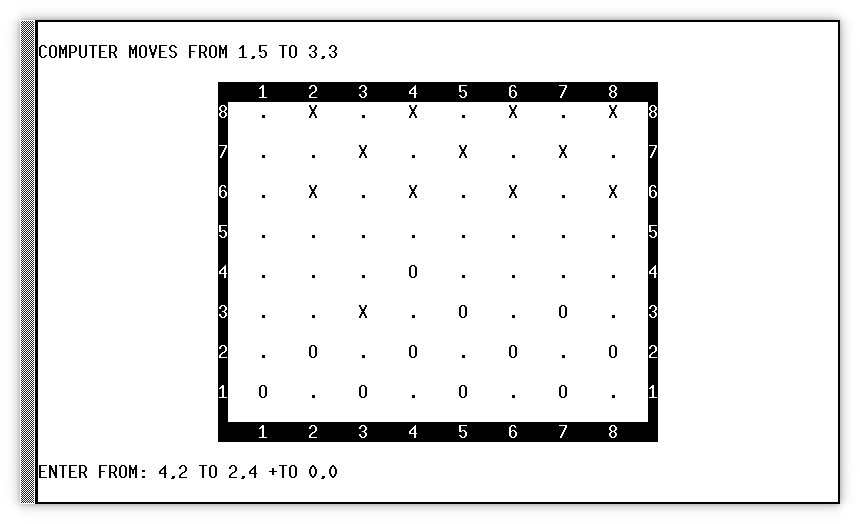
101 BASIC Computer Games (later edition known simply as BASIC Computer Games) was a shockingly great hit, especially coming as it did at the dawn of the age of personal computers. Allegedly, there was a point where there were more copies of BASIC Computer Games in print than there were computers in existence. This little volume had a big impact on computer culture and computer games. To this day, people continue to update these simple games for newer languages, all in the name of keeping the tradition alive.
So let's look at BASIC Computer Games and the influence it wrought. The book is now in the public domain and there are lots of options for anyone who wants to try out the games for themselves. There is a version for Small Basic that allows for copy-pasting, but anyone hardcore enough to go for the original experience can type in the codes from the scans on Atari Archives.
Background
BASIC Computer Games was compiled by the computer writer David H. Ahl, but the games themselves have a messier heritage.
The games featured in the book were designed and programmed by various people across the 1960s and early 70s. As this predates microcomputers, many originally ran on mainframe computers of the type seldom seen outside of business or academic environments. Sometimes, the exact provenance of the games is unknown — bored technicians were known to iterate on each other’s code, and games were no exception. The more famous games have something of a folk history, with variants under different names appearing across a range of institutions.
Ahl’s contribution was not just compiling these games from those institutions, but in making them more universal. He programmed the original games in various and sundry machine languages, including some that have since become quite obscure. BASIC was widely used at the time, allowing for many to run the BASIC conversions in the book on most home computers.
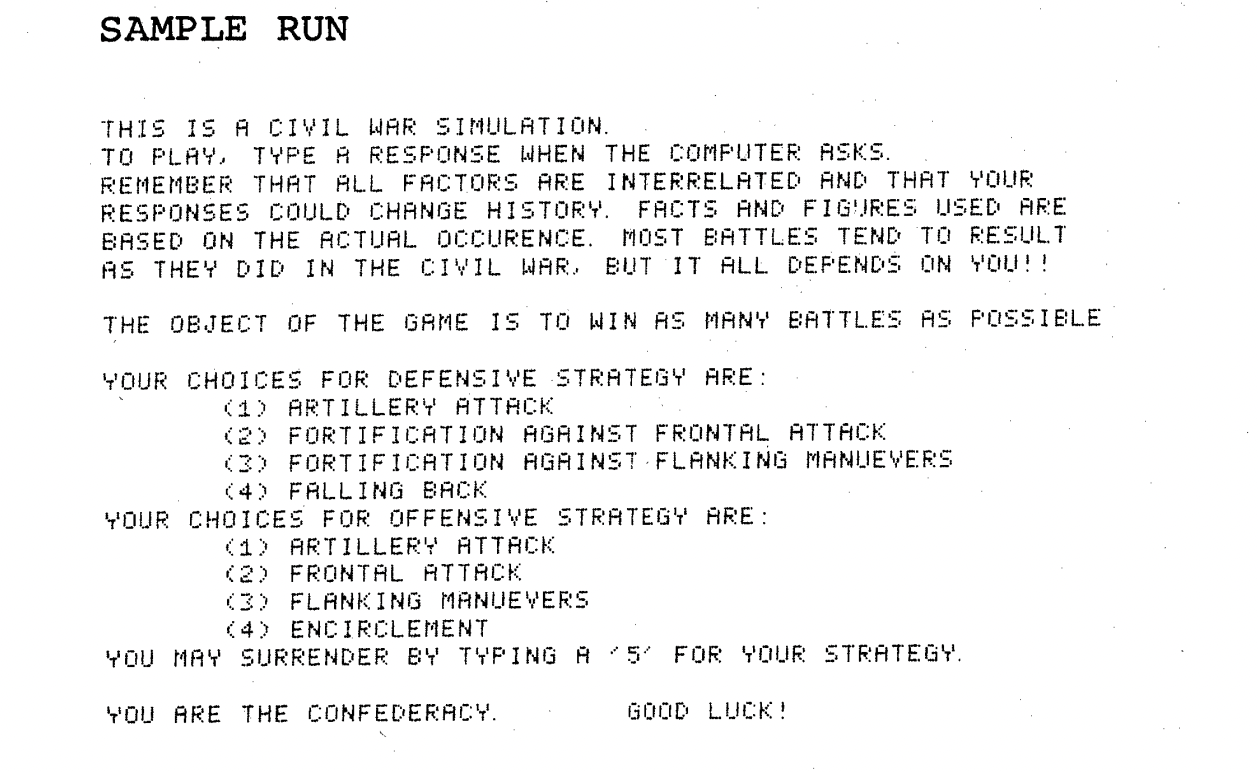
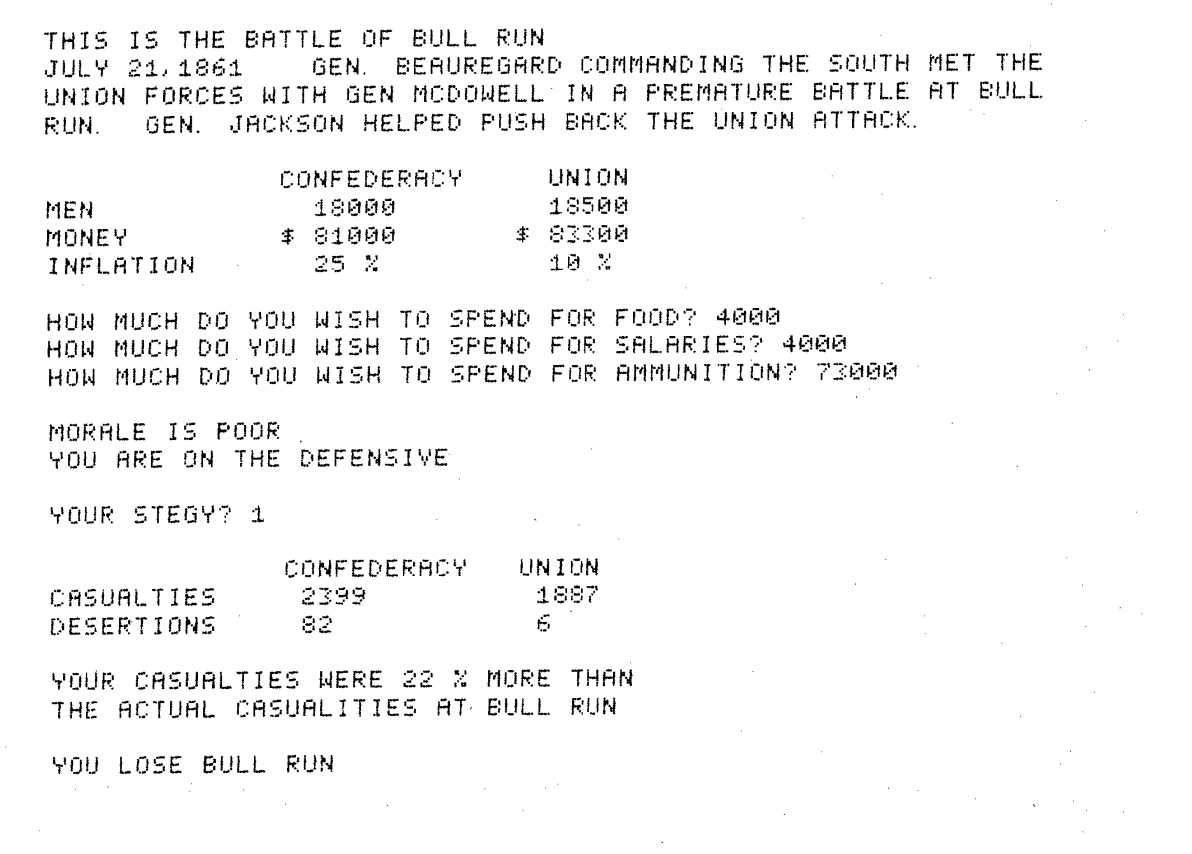
Sample run of Civil War game. Source: Digital Equipment Corporation.
The Games
As you might imagine, the games appearing in BASIC Computer Games are very simple. Designed for a non-graphical CLI environment, the programmers were doing what they could with what they had.
Even with that caveat, it’s worth nothing that not all of these programs are really “games.” Of the 101 programs featured, many of them are more like utilities or digital toys. These include a program to generate a calendar, one to simulate rolling dice, a few simple conversation programs, and several that generate ASCII art. Should you one day find yourself sent back in time to the mid-70s and want a sine wave on your new Apple II, rest assured that you can make it happen.
Setting those aside and looking at the actual games, you’ll see a lot of familiar titles. Many card games are represented in the compilation, including poker and blackjack (a perennial favorite for new programmers — ask me about my FORTRAN version), as well as other games of chance such as craps and roulette. There are a few classic board games represented, such as Mastermind and Battleship (called “Battle” in the book). A few puzzles make the book, including some well-known ones like peg solitaire and the Tower of Hanoi. You’ll also find vintage childhood time-wasters such as Hangman, Tic-Tac-Toe, and War.
The more interesting games are the simulations, several sport games appearing in the compilation. You might wonder how a machine with no graphics can run a game of basketball or a boxing match. These are essentially very simple strategy games where the player picks a strategy from a list and the computer decides the outcome. There are quite a few games of this type. One of the more interesting is the Civil War, which purports to use historical information to simulate fourteen battles of the American Civil War.
But there are a few games that are particularly notable and had an unexpected impact on the burgeoning industry.
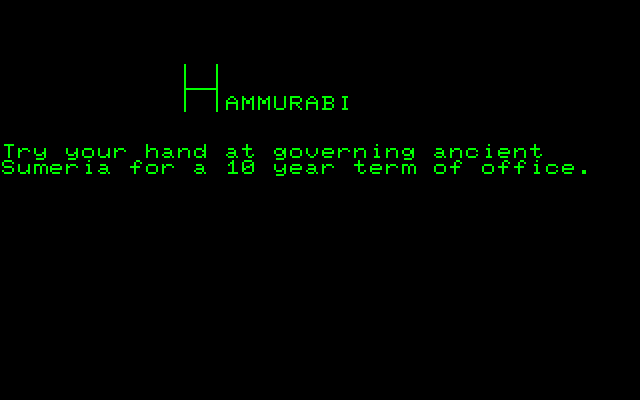
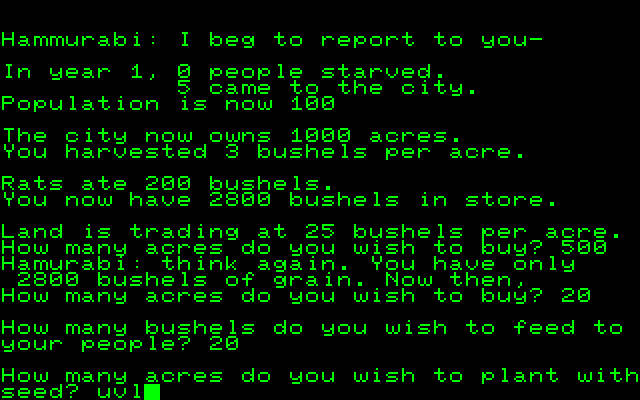
Running on Commodore PET. Source: uvlist.
Hammurabi
Hammurabi has a very interesting pedigree. It traces inspiration from The Sumerian Game, a multimedia educational strategy game developed in 1964 as an early IBM experiment in using computers in schools. The Sumerian Game is arguably one of the first computer strategy games, and it didn’t stay confined to IBM for long. A simplified version was programmed in the FOCAL language in 1968, which was later converted into the BASIC game Hammurabi.
This is a basic resource management game that tasks the player with maintaining a Babylonian city for ten years. There are only three resources to manage – grain, land and people – but random events crop up to ensure that the process is not a smooth one. While it is very rudimentary (especially compared to the original version), the resource management element has since become a staple in a lot of strategy and simulation titles.
Lunar LEM Rocket
More of a family of games than a single program, Lunar LEM Rocket is one version of a game that had been floating around programming circles under various names for years. Regardless of the name, the underlying game simulates the landing of Apollo 11. This is done by managing the retrorockets to ensure a gentle landfall. Careful management of both velocity and fuel is necessary to avoid crashing into the Moon.
By the time BASIC Computer Games were published, games of this type were already growing in popularity. There was already a light pen-controlled graphical version, and by the end of the decade Lunar Lander, an Atari-produced arcade game that added further flourishes joined in.
Super Star Trek
It’s probably no surprise that there were plenty of unofficial Star Trek games in the days of mainframe computing. These games had little in common, save that they co-opted the name of the legendary science fiction slow. The most notable one by far was programmed in 1971 by Mike Mayfield, who had originally hoped to create a teletype version of Spacewar!, an early vector game. Instead, he ended up with a simple strategy game that was passed around computing circles for decades.
I say that Super Star Trek (the name for Ahl’s BASIC version) is simple, but compared to most of the other games mentioned above, it’s actually quite sophisticated. It tasked the player with sweeping Klingon warships from areas based on systems described in the show. The player’s ship is equipped with two weapons with different mechanics, short- and long-range scanners, shields and a warp drive, all of which must be managed and maintained to stay competitive with the Klingons.
If this sounds familiar, it might be because you've played a game based on it. Similar games with increasing mechanical and graphical sophistication were programmed for decades following the publication of BASIC Computer Games. More famous descendants include the Star Fleet series (released intermittently since 1983) and the shareware game EGATrek.
Specific exceptions aside, the games and programs featured in BASIC Computer Games are extremely rudimentary. The most significant part of the volume isn’t the games themselves, but the mode of distribution.
The video game industry barely existed in the early 70s. Distribution was limited to arcade cabinets and a handful of home systems with inbuilt games, and there were few companies that specialized in electronic games. It was hard enough for anyone to get a video game to market, but it was virtually impossible for hobbyist developers working on mainframe games. Books like BASIC Computer Games gave these nascent developers a chance to get their games to the public while also exposing the public to something new.
In short, BASIC Computer Games represents one of the first buds in what we now call the indie video game scene.
